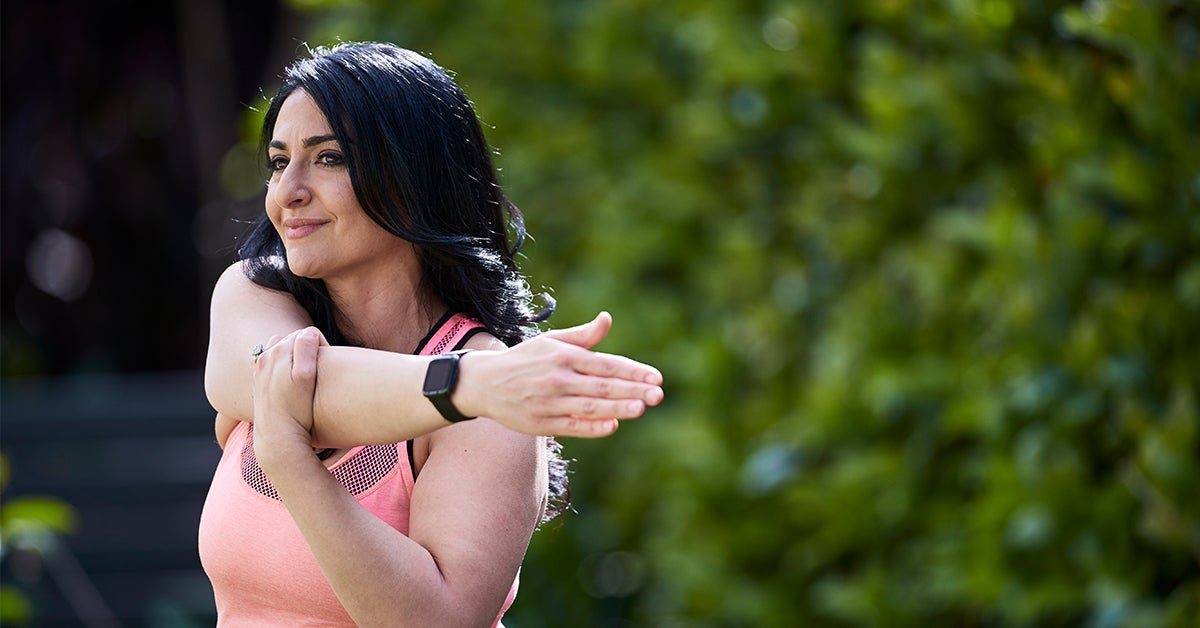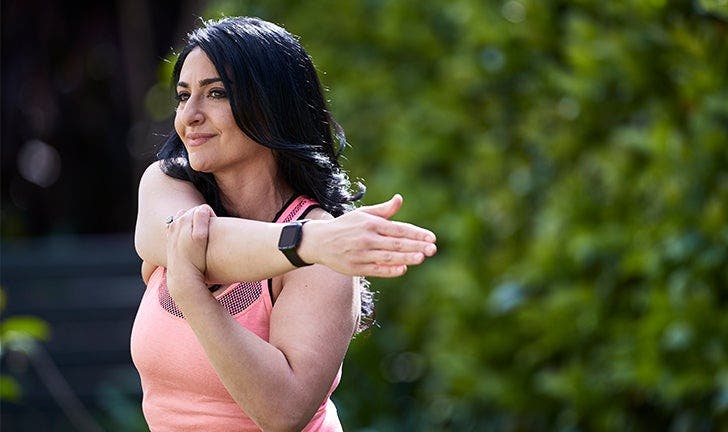No pain, no gain – or is it?


“No pain, no gain” is the classic gym refrain, but is the old adage really true? Do you really need to hurt after a workout to see progress?
“The quick and definitive answer is no,” says Rachel Land, a Yoga Medicine® therapeutic specialist, E-RYT500, YACEP and a member of the Yoga Medicine® teaching team.
“Pain is a complex and individual experience that involves both physiological and psychological factors. It is difficult to define in concrete and unambiguous terms, but it is not a marker of an effective workout,” she says.
“For starters, we work out for many reasons, not all related to pure performance enhancement. We work out because it’s fun, because [it] makes us feel strong and capable, it give[s] us variety from work or home routines, as an outlet for stress, to lift our energy and mood, to maintain a healthy body weight, or to connect with our friends or the great outdoors.”
But even if you’re working out with the sole aim of improving your performance in some way, such as increased strength, cardiovascular endurance, explosive power or speed, Land says it would be more accurate to say “no challenge, no gain”.
“We humans are adaptive creatures; almost every system in the body changes over time in response to the demands placed on it. Our immune system becomes stronger from exposure to pathogens, our heart learns to work more efficiently when regularly required to pump greater volumes of blood. And the reverse is also true: astronauts’ muscles and bones atrophy when the load of gravity is removed, in the vacuum of space. So, in order to see improved physical performance in stronger muscles, or more efficient cardiovascular circulation, we do need to step outside our existing capacity, to challenge our bodies enough to prompt these positive physiological adaptations.”
The difficulty, she explains, lies in figuring out how much of a challenge you need.
“No challenge at all means no positive adaptations – no change. But too much of a challenge can overwhelm our bodies’ capacity to adapt, leading to pain or even injury.”
Speaking of pain, how do you know the difference between a “good” pain and a “bad” pain when it comes to working out?
“Good” vs. “bad” workout pain
“Sometimes challenging ourselves with a new movement, new activity type, or new level of workout intensity results in us experiencing sore, achy muscles a day or two later, a phenomenon called ‘Delayed Onset Muscle Soreness’ or DOMS (or less often post-exercise muscle soreness or muscle fever),” Land explains.
Scientists aren’t completely sure what the exact cause of DOMS is, she says, but “general consensus seems to be that it results from some unknown combination of mechanical and metabolic stressors, including a buildup of metabolic byproducts and inflammatory processes related to the repair of microscopic damage to muscles and fascia.”
“DOMS is usually harmless, so while it’s not a requirement of an effective workout it could be categorized as ‘good’ pain – a sign that we have exceeded our current capacity in the effected muscle group/s. DOMS usually appears the day (or two) after a new workout, making the relevant muscles feel stiff, tight, achy and tender to touch or use, before dissipating over the next day or two.”
When it comes to “bad” pain, Land says just about everything else fits into that category: stronger pain, longer-lasting pain, or wider symptoms including nausea, headaches, dizziness, and changes to breathing or circulation.
“Strong or pulling pain in a muscle, especially if it lasts longer than a day or two or is accompanied by swelling, could indicate a muscle strain. Pain or swelling in or around a joint could suggest inflammation or injury to joint structures including tendons, ligaments and bursae. Shooting or electrical pain could indicate nerve involvement or impingement. Anything that doesn’t fit the description of DOMS is worth paying attention to, and potentially seeking medical care for,” she says.
Tips for workout recovery
“Every athlete seems to have their own tried and tested recovery protocol but, other than general suggestions that dehydration and poor sleep can exacerbate DOMS symptoms, scientific research is as inconclusive on methods to reduce DOMS as it is on its cause,” says Land.
“One clear takeaway is to prioritize good hydration, and get comfortable enough to be able to sleep soundly. For most of us, it also helps to take a couple of days’ break from the kind of workout that created DOMS in the first place, maintain some gentle movement to create temporary reduction in pain and stiffness, and employ whatever other techniques we enjoy.”
And better than that, is to prevent it in the first place, she adds. This means taking the time to warm up properly before a workout and cooling down afterward.
“It also means being willing to progress patiently – building intensity slowly, and adding new movements (especially those that involve eccentric loading) gradually.”
Ultimately, pain is never a requirement for an effective workout, Land says.
“’No pain, no gain’ is an outdated adage, leading some of us to approach exercise as punishment instead of allowing it [to be] a source of pleasure and satisfaction.”
